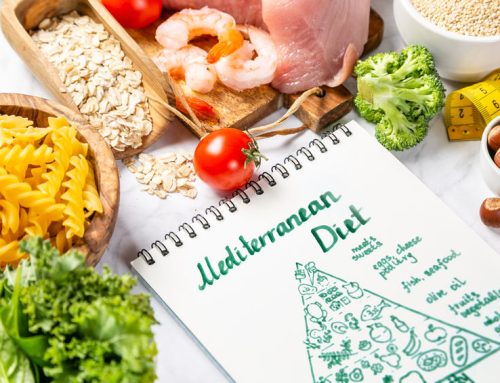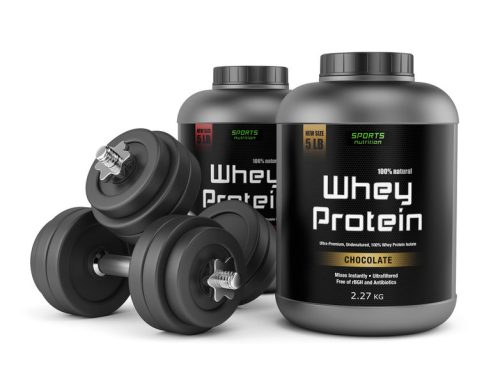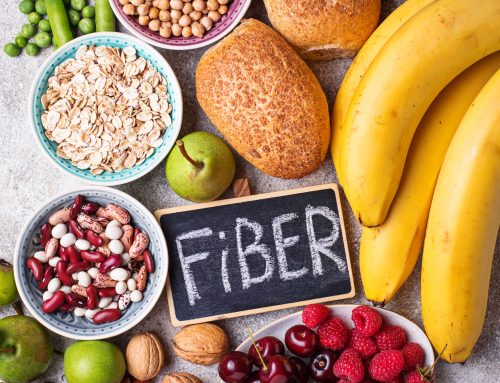What is a healthy lifestyle? The answer is not always clear.
The American Cancer Society’s new guidelines increase the amount of weekly exercise and provide more details on which foods are best to eat.
• New guidelines released by the American Cancer Society encourage people to exercise more per week to reduce their cancer risk.
• They also encourage people to greatly reduce the amount of red meat in their diet and to eat more colorful fruits and vegetables.
• The guidelines also urge people to strictly limit alcohol.
New Guidelines for What is a Healthy Lifestyle
Here are the revised American Cancer Society Guidelines that answer the question of what is a healthy lifestyle.
The update focuses on increasing physical activity and developing healthy eating patterns at every age.
Here are some of the recommendations:
• Adults should engage in 150 to 300 minutes of moderate-intensity or 75 to 150 minutes of vigorous-intensity physical activity per week.
o Achieving or exceeding the upper limit of 300 minutes is optimal.
• It is best not to drink alcohol.
o People who choose to drink alcohol should limit their consumption to no more than one drink per day for women and two drinks per day for men.
• Follow a healthy eating pattern at all ages.
o A healthy eating pattern includes foods that are high in nutrients in amounts that help achieve and maintain a healthy body weight. That includes a variety of colorful vegetables and fiber-rich legumes (beans and peas), whole fruits with a variety of colors, and whole grains.
o A healthy eating pattern limits or does not include red and processed meats, sugar-sweetened beverages, highly processed foods, and refined grain products.
Previously, the recommendations read that 150 minutes of moderate-intensity or 75 minutes of vigorous activity weekly were sufficient, and alcohol consumption should be limited.
The increase in exercise coincides with a study published June 18 that reported people with the most sedentary behavior have an 82 percent higher risk of dying from cancer than people with the least sedentary behavior.
The prior recommendations also suggested a diet with more plant foods, and foods and beverages in amounts that help achieve and maintain a healthy weight, and eating at least 2.5 cups of vegetables and fruits each day while choosing whole grains.
“The guideline continues to reflect the current science that dietary patterns, not specific foods, are important to reduce the risk of cancer and improve overall health,” said Laura Makaroff, DO, the American Cancer Society’s senior vice president of prevention and early detection.
“There is no one food or even food group that is adequate to achieve a significant reduction in cancer risk,” she said in a press release. “Current and evolving scientific evidence supports a shift away from a nutrient-centric approach to a more holistic concept of dietary patterns.”
“People eat whole foods — not nutrients — and evidence continues to suggest that it is healthy dietary patterns that are associated with reduced risk for cancer, especially colorectal and breast cancer,” said Makaroff.
Tips on reducing alcohol intake
Experts agree that the proper course of action to reduce the consumption of alcohol depends on the individual.
“People drink alcohol for a variety of reasons, and tips for reducing the consumption will depend on individual circumstances,” Passerrello said.
Passerrello gives three common situations where people consume alcohol and how she advises clients in each case:
• Drinking socially with friends. She recommends having one drink and then switching to club soda with lime and maybe a splash of juice.
• Drinking to relax in the evening. She will brainstorm with clients alternative ways to relax.
• Drinking to complement a meal. She will discuss quantity and frequency goals.
“If I am working with a client who is interested in reducing their alcohol consumption, we will talk about the situations and brainstorm ways to reframe their thinking,” Passerrello told Healthline.
“They may be adding more time for self-care, sleep, and exercise if they are reducing the time spent in environments that have them drinking alcohol,” she said. “We also talk about fun ‘mocktails’ they can experiment with.”
Taking baby steps or going cold turkey are both viable options, depending on personal factors.
“I often will recommend if my patients are drinking daily to start with every other day and then limit further, perhaps by limiting drinking to weekends or just two times per week,” she told Healthline. “The amount each time counts, too. Sometimes, measuring can help if you still feel the need to drink daily. You can at least stick to just one serving.”
Kirkpatrick mentioned that the studies on excess drinking and breast cancer are quite strong, and for some of her clients, especially those with a family history of breast cancer, knowing the risk can be motivation to stop.
Click here to determine what is a healthy lifestyle according to the American Cancer Society.







